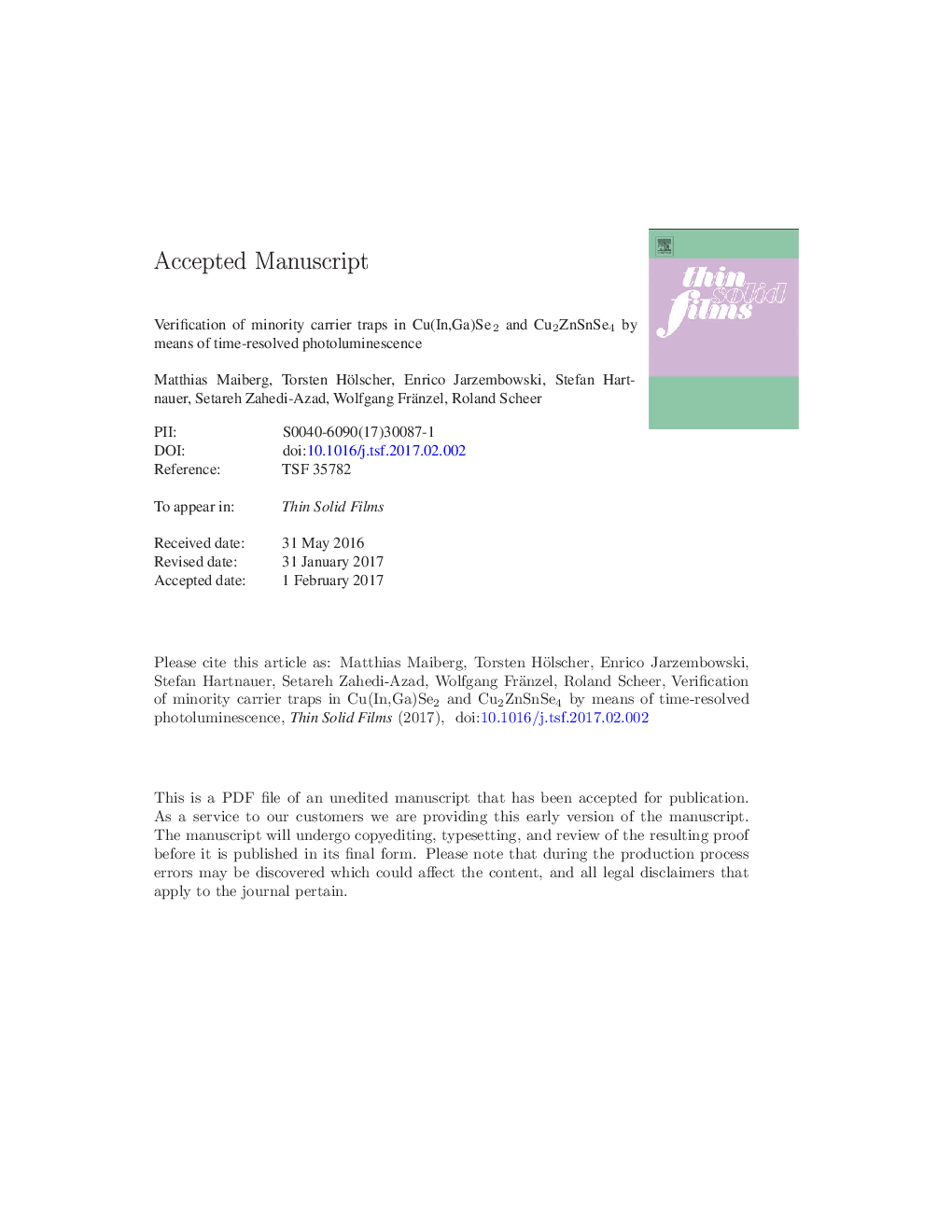| Article ID | Journal | Published Year | Pages | File Type |
|---|---|---|---|---|
| 5465947 | Thin Solid Films | 2017 | 10 Pages |
Abstract
The decay of the room-temperature time-resolved photoluminescence (TRPL) on thin-film semiconductors such as Cu(In,Ga)Se2 and Cu2ZnSnSe4 often is bi-exponential. This can be traced back either to fluctuations of the electrostatic potential or to minority charge carrier trapping. We show by means of simulations that both effects can be discriminated by a measurement of the TRPL decay at different excitation intensities and temperatures. Application of the standard semiconductor theory yields, that the bi-exponential photoluminescence decay in Cu(In,Ga)Se2 and Cu2ZnSnSe4 must result from a strong minority carrier trapping. By simulation of experimental TRPL decay curves we can determine the minority carrier lifetime, the trap energy, the trap density, and the doping density of these materials with values in the ranges of 1-10 ns, 200 meV, 1015 â1016 cm â3, and 1015 â1017 cm â3. These yield reasonable solar cell parameters and they also explain the non-correlation of the open-circuit voltage and the luminescence decay time.
Keywords
Related Topics
Physical Sciences and Engineering
Materials Science
Nanotechnology
Authors
Matthias Maiberg, Torsten Hölscher, Enrico Jarzembowski, Stefan Hartnauer, Setareh Zahedi-Azad, Wolfgang Fränzel, Roland Scheer,
